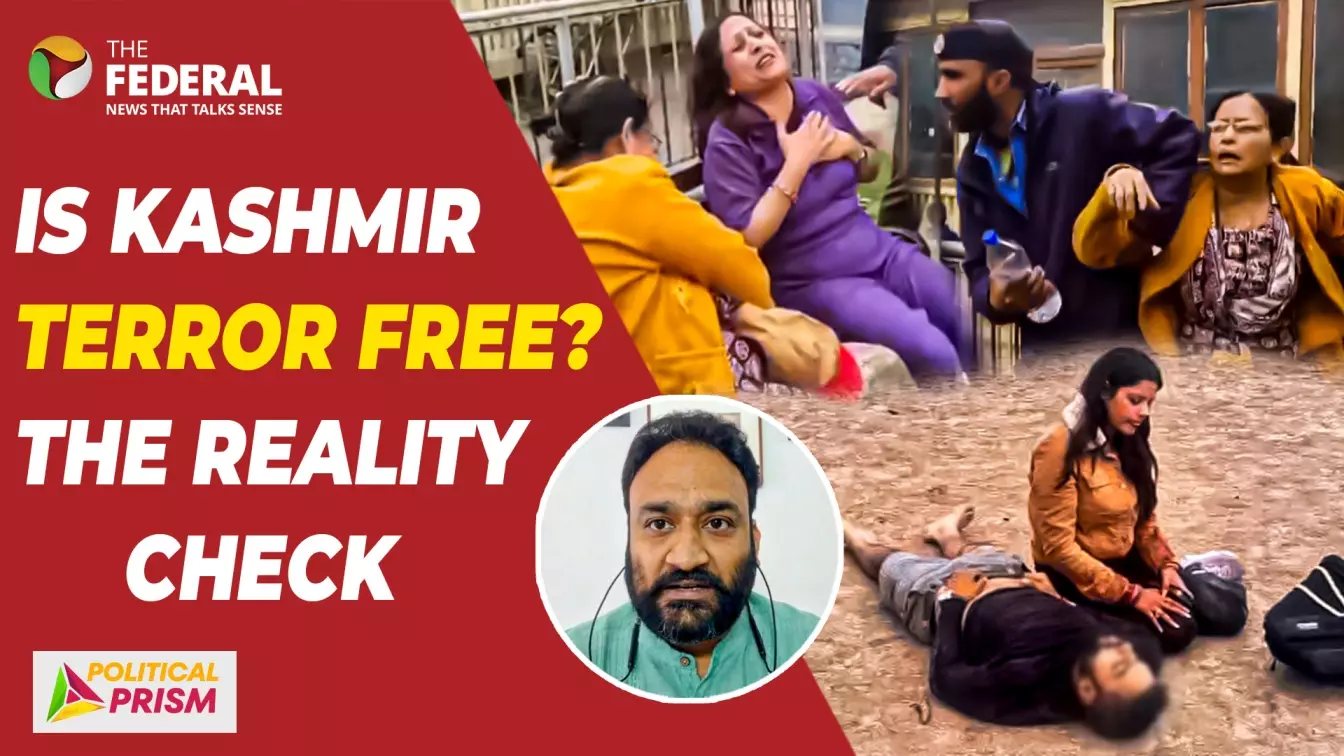
Is Kashmir really terror-free as Centre claims? Pahalgam attack a reality check
The Centre has, time and again, claimed that terror activities in Kashmir have been neutralised; yet, attacks have continued. Where does the buck stop?

In one of the worst terror attacks witnessed in Kashmir in years, 26 civilians were gunned down in Baisaran, Pahalgam, on Tuesday (April 22).
The attack was reportedly carried out by the Resistance Front (TRF), a group believed to be a proxy of the Pakistan-based Lashkar-e-Toiba. The incident has not only stunned the nation but also reopened critical questions about the government's repeated claims of having ended terrorism in the Valley.
The incident, reminiscent of the 2000 Chittisinghpora massacre, has sparked a political and public outcry. Home Minister Amit Shah rushed to Srinagar, while Prime Minister Narendra Modi cut short his overseas visit. Opposition leader Mallikarjun Kharge urged the Centre to convene an all-party meeting, calling for unity in condemnation and action.
“This is not the time for a political blame game,” Kharge said during a press conference.
Claims vs reality
While statements, condemnations, and official visits followed the expected post-attack protocol, there is a need for deeper introspection into what went wrong. Despite the Centre’s firm control over J&K's security apparatus, there is a visible absence of serious accountability.
The government has, time and again, claimed that terror activities in Kashmir have been neutralised—first, after demonetisation and later, after the abrogation of Article 370 in 2019. Yet, attacks have continued across both Kashmir and Jammu regions, with several involving bike-borne gunmen and daylight strikes.
And then, less than a month after the Home Minister said terrorism has been buried in Kashmir, this attack has jolted the country.
Also read: Red line crossed, India weighs responses to Pahalgam terror attack
TRF and the aftermath of Article 370
The Resistance Front (TRF), which claimed responsibility for the Pahalgam attack, reportedly came into existence after Article 370 was scrapped. The organisation has since been linked to several terror incidents, including the Krishna Dhaba attack. This raises tough questions about the Centre’s narrative of restored peace.
Security experts and government sources alike have previously acknowledged TRF's role, making the silence or denial in political circles all the more stark. With the security apparatus in Kashmir reporting directly to the Union government via the Lieutenant Governor, the Centre cannot shift blame on to the now-defunct state government.
Also read: She was eating bhel-puri; her husband was suddenly shot | Horror accounts from Pahalgam
Intelligence lapses and soft targets
Equally concerning is the apparent lack of preventive intelligence. According to locals and journalists, there were no visible security deployments in the Baisaran meadow area despite it hosting over 2,000 people in this peak tourist season. Not a single security personnel was in sight when the terrorists struck.
The episode raises alarm bells about preparedness and coordination between agencies. If inputs existed, were they acted upon? If not, why were routine safeguards not implemented in such a high-density area?
The myth of normalcy
The central government has been projecting an image of “normalcy” in Kashmir for several years now. This narrative has been bolstered by claims that demonetisation cut terror funding and that Article 370's revocation dismantled separatist ecosystems.
However, there is enough data to show that terror incidents have continued.
Also read: Pahalgam attack: 'Nothing to do with it', Pakistan claims; Delhi skeptical
A political reckoning
Therefore, it’s time for the Centre to stop deflecting responsibility—whether towards opposition parties, the judiciary, or local political actors. The buck, ultimately, stops with the Prime Minister and the Home Minister.
The Pahalgam attack has ripped through the Centre’s narrative of calm in Kashmir. As grief turns to outrage, and outrage to questions, the needs of the hour are honest accountability, genuine reassessment of ground realities, and an end to rhetoric that serves little purpose beyond political optics.
The content above has been generated using a fine-tuned AI model. To ensure accuracy, quality, and editorial integrity, we employ a Human-In-The-Loop (HITL) process. While AI assists in creating the initial draft, our experienced editorial team carefully reviews, edits, and refines the content before publication. At The Federal, we combine the efficiency of AI with the expertise of human editors to deliver reliable and insightful journalism.

